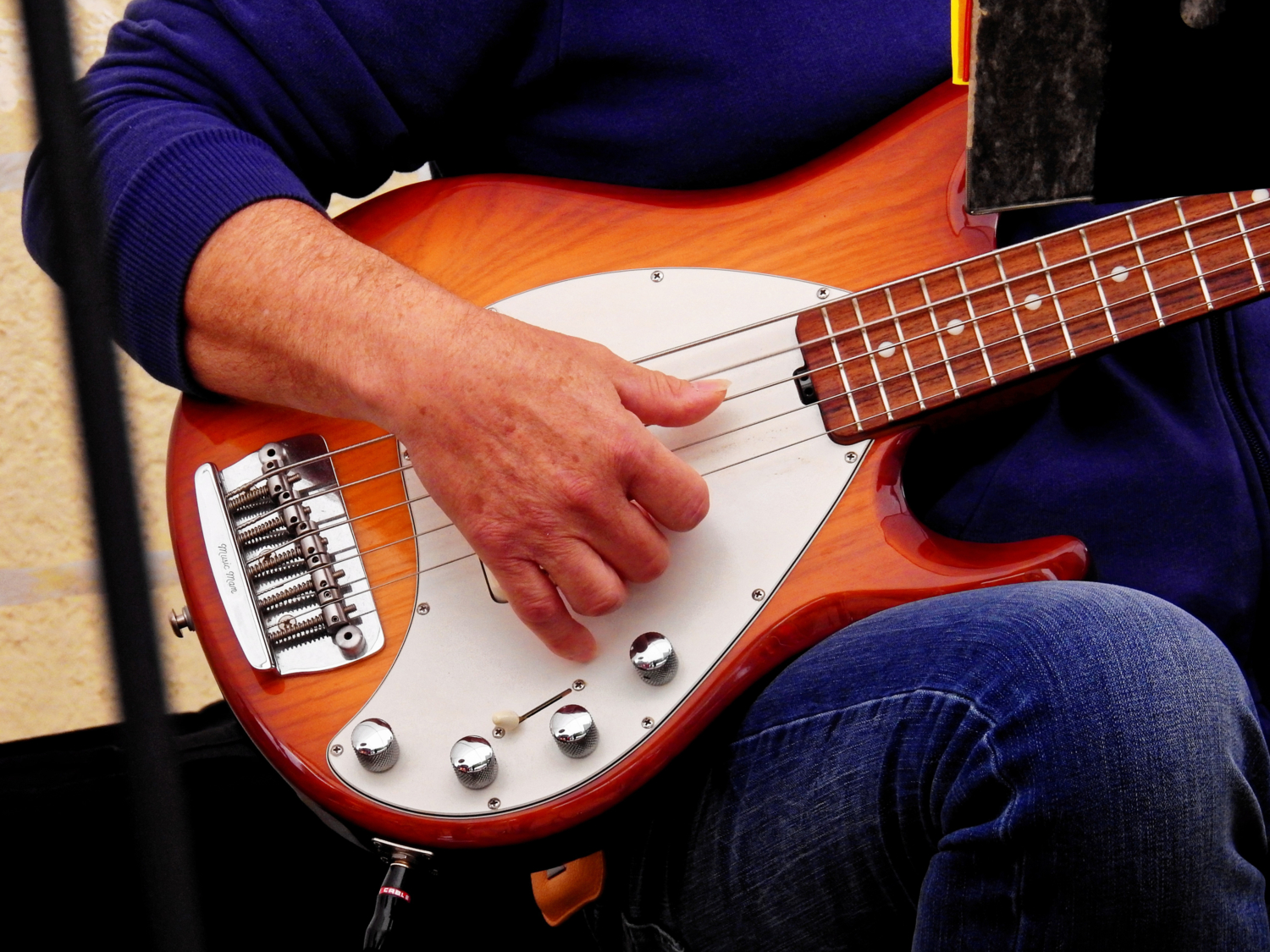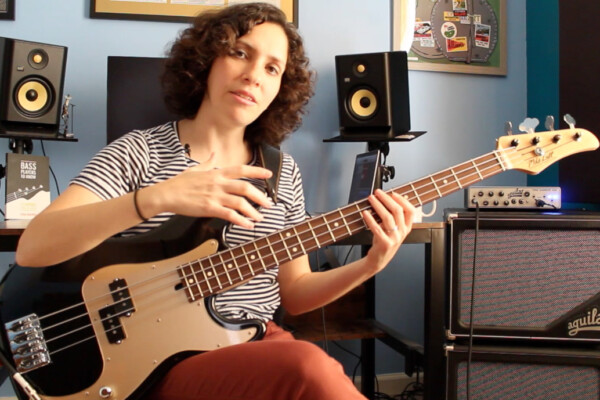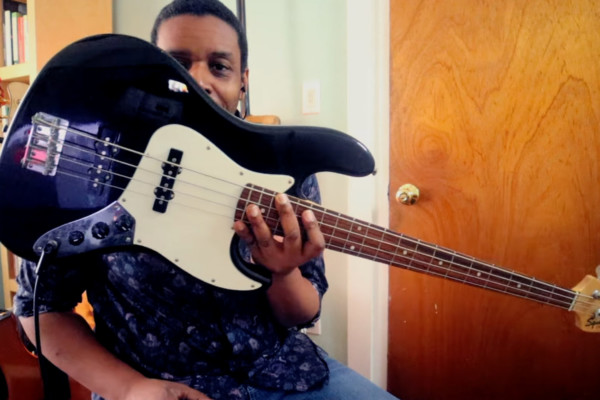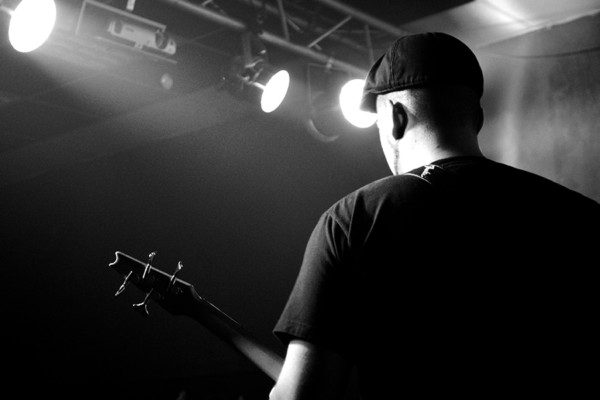How To Play Relaxed While Getting a Good Sound

Q: When I listen to people playing bass, I always notice two things: 1) They play relaxed with their right hand and don’t use a lot of force and 2) while they do this, they STILL get a good volume and tone. When I play bass, I use quite a bit of force with my right hand (plucking) because when I play in a band, I feel that my bass sound/volume is just not enough. That results in blisters. How can I play relaxed with not too much force but STILL get the proper volume? Does it have to do with my treble/mids/bass EQ? By the way, I play an ESP LTD B 4 E.
A: There are a lot of variables that go into your sound and how it blends, cuts or gets lost in a group. Without hearing and watching you play, it’ll be hard to get too specific but I do have some thoughts.
It’s crucial to remain relaxed when playing. Not only does it make playing easier but it also makes it much less likely that you would injure yourself. Many young players today work pretty hard on maintaining a light touch, which helps to facilitate speed. The most obvious way to make it physically easier to play your instrument is to lower the action; assuming your neck is straight or near straight (I prefer just a touch of forward bow), you can simply adjust the saddles on your bridge with an Allen wrench and lower the height of your strings.
Note: This is best done in small incremental steps. Quarter or half turns of the wrench at a time, until you’ve got it just about right. Then, also make sure that each string is about the same height from the fretboard. I usually eyeball it but many people like to measure. Some measure from the middle of the string to the fretboard but I usually just eyeball the bottom of all of the strings and make sure that they are at about the same height, relative to any radius of the fretboard.
You can also experiment with pickup height but be aware that adjusting the height of your pickups will also adjust the sound a bit because you are altering the space in between the magnets and the strings.
If you are unsure or feel uneasy adjusting your own instrument, it can be done cheaply by most instrument stores and any luthiers in your area.
Note that lowering the strings too much will change the sound of your instrument as well; especially if the strings are hitting any frets as you play. The lower the action, the lighter a touch is required to get a clean sound. I’ve experimented quite a bit with string height and, by process of elimination, found my happy place. I like my strings as low as possible but high enough that I can pluck hard or soft, without fretting out or getting a choked or spiked sound. If you maintain a healthy amount of space in between the fretboard and your strings, you have more tonal possibilities available to you because you can more drastically alter your plucking hand technique in order to achieve certain tones.
Another thing to experiment with is your volume. You may just be a bit too quiet. I’ll sometimes turn my volume up just a little too loud in the shed, in order to force myself to play as softly as possible. This is another way of retraining your fingers to pluck more softly but it can also work on stage if you find yourself digging in far too much just to be heard. A small bump in volume can do the trick, just be aware of your stage volume and keep it appropriately blended with the rest of the band (ie: don’t just turn up but turn up and then lighten your touch and play more softly).
As you mentioned, EQ can also play a role and that can change from room to room as you gig around. Often, the sound I might dial in while by myself on a stage isn’t the sound that actually works best in the mix. I want clarity while not sounding brittle or tinny. I want bass and girth without sounding too muddy or like a sub-bass. I want a mid-range punch without sounding nasally. It’s a fine line to draw and that line lays differently for every player and every playing situation. This is something that comes together with experience (asking opinions of bandmates and sound people is a great way to learn a bit about how you’re affecting everything around you). I tend to leave my EQ as flat as possible while adding or subtracting a bit of highs, mids, or lows as is necessary for the situation. With regard to volume, I tend to place myself at around kick-drum volume (usually sitting right on top of it). I also check to make sure that my tone doesn’t interfere with the kick drum cutting through the mix. The bass frequencies can actually make the kick drum disappear to a certain extent.
So, in summary… Practice playing with a light touch (which may mean, slowing things way down and re-developing your muscle memory. You will have to work to change your technique), evaluate your instrument’s set-up with relation to how you want to play, read up a bit on EQ, bass tone and mixing, etc.. start educating yourself about where you should be in the mix with the band and ask those around you (since I can’t hear you now). I think you’ll stumble upon one or more solutions pretty quickly. Thanks for the question!
Readers: How did you figure out how to approach your sound, volume, technique and eq with regard to the rest of the band? Please share in the comments.
Have a question for Damian Erskine? Send it to [email protected]. Check out Damian’s instructional books, Right Hand Drive and The Improviser’s Path.



